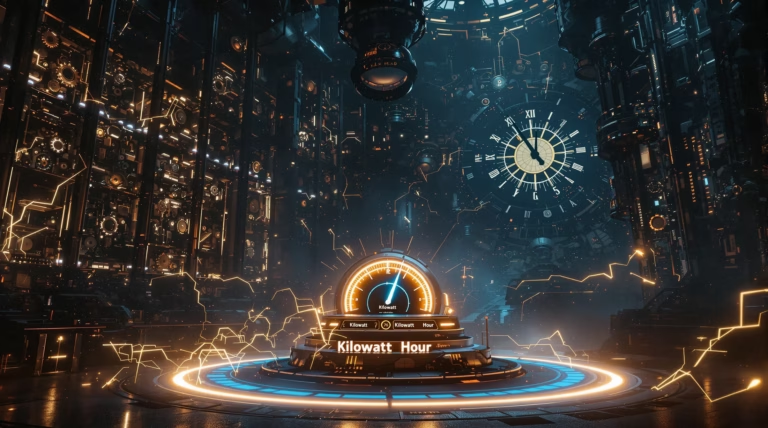Solar vs Gas Generator: Which Power Source is Right for You?
Looking to make an informed decision between solar and gas generators for your backup power needs? This comprehensive comparison will help you understand the key differences, costs, and practical considerations of both power solutions to determine which option best suits your specific requirements.
Understanding Solar and Gas Generators
Solar and gas generators represent two fundamentally different approaches to backup power generation. Each system operates on distinct principles and offers unique advantages for different scenarios. Their differences span multiple aspects, from operational costs to environmental impact, making it essential to understand their core characteristics before making a decision.
What is a Solar Generator?
A solar generator is a portable power system that converts sunlight into electrical energy through photovoltaic panels. The system consists of several key components:
- Solar panels for energy collection
- Charge controller to regulate power flow
- Battery storage system
- Inverter for DC to AC power conversion
Solar generators excel in providing clean, renewable energy with minimal maintenance requirements. They operate silently and produce zero emissions, making them ideal for environmentally conscious users and outdoor activities. While the initial investment may be higher, the long-term benefits include free energy generation and reduced maintenance costs.
What is a Gas Generator?
A gas generator utilizes fossil fuels to generate electrical power through an internal combustion engine coupled with an alternator. These systems offer immediate and consistent power output regardless of environmental conditions, making them reliable for emergency situations.
| Advantages | Disadvantages |
|---|---|
| Immediate power availability | Carbon emissions |
| Higher power output | Noise pollution |
| Continuous operation with fuel supply | Regular maintenance required |
| Weather-independent operation | Ongoing fuel costs |
Comparing Costs: Solar vs Gas Generators
The financial comparison between solar and gas generators extends beyond initial purchase prices, encompassing both upfront investments and long-term operational expenses.
Initial Investment and Installation Costs
The initial cost structure varies significantly between the two options:
- Solar generators: $1,000 – $5,000
- Gas generators: $500 – $2,500
- Installation requirements – minimal for solar, potentially complex for gas
- Additional costs for gas generators may include permits and professional installation
Long-term Maintenance and Operational Costs
The long-term financial implications reveal stark differences between the two systems. Solar generators require minimal maintenance beyond basic cleaning, with components typically lasting 5-15 years. Gas generators, however, incur regular expenses:
- Fuel consumption: 8-20 gallons per 24 hours of operation
- Regular maintenance including oil changes and filter replacements
- Professional servicing and tune-ups
- Potential fuel system issues from infrequent use
- Component replacement and repairs
Environmental Impact of Solar and Gas Generators
The environmental implications of solar and gas generators represent distinctly different impacts on our planet’s ecosystems and atmosphere. While solar generators harness renewable energy that naturally replenishes itself, gas generators consume finite fossil fuels formed over millions of years. According to the International Energy Agency, the transition to renewable energy sources like solar has already reduced carbon emissions by approximately 20 million tons in the United States alone.
Carbon Footprint and Emissions
Solar generators operate with zero direct emissions, generating electricity without combustion or pollution. Their environmental impact is primarily limited to manufacturing and transportation phases rather than actual use.
- Carbon dioxide (CO2) – primary greenhouse gas driving climate change
- Nitrogen oxides (NOx) – contributes to smog formation and respiratory issues
- Carbon monoxide (CO) – potentially lethal in enclosed spaces
- Particulate matter – impacts air quality and public health
- Approximately 100 pounds of CO2 per 8 hours of operation for typical gas generators
Sustainability and Resource Use
| Solar Generators | Gas Generators |
|---|---|
| Uses abundant solar energy, viable for billions of years | Relies on finite fossil fuels |
| Silicon derived from plentiful sand resources | Requires fracking for natural gas extraction |
| Minimal ongoing resource consumption | Continuous fuel consumption |
| Limited ecosystem disruption | Significant habitat disruption from fuel extraction |
Energy Efficiency and Performance
Solar and gas generators exhibit distinct performance profiles based on their energy conversion processes. Gas generators typically achieve 35-40% fuel-to-electricity conversion efficiency, while solar panels convert up to 23% of available sunlight into power. These differences significantly impact their practical utility and suitability for various applications.
Power Output and Reliability
- Gas generators: Immediate output of 3,000+ watts, capable of powering multiple home appliances
- Solar generators: 1,000-2,000 watts output, suitable for smaller appliances and devices
- Weather impact: Cloudy conditions can reduce solar generation by 70-90%
- Continuous operation: Gas generators maintain consistent output with fuel supply
- Battery dependency: Solar systems require balance between generation and storage capacity
Limitations and Challenges
| Solar Generators | Gas Generators |
|---|---|
| Dependent on sunlight availability | Limited by fuel tank capacity and availability |
| Reduced efficiency in winter/cloudy conditions | Cannot operate safely indoors (CO emissions) |
| Requires significant physical space | Mechanical complexity leading to potential failures |
| Battery storage adds cost | Noise levels of 60-90 decibels during operation |
Choosing the Right Power Source for Your Needs
The selection between solar and gas generators requires careful evaluation of specific requirements and circumstances. Recent energy consumption studies indicate that proper generator matching can improve user satisfaction by up to 85%. Success depends on whether the primary use case involves emergency backup, remote location power, or regular off-grid operation.
Factors to Consider
- Power requirements – Gas generators offer 3,000+ watts for multiple appliances, while solar generators provide 1,000-2,000 watts for electronics and small devices
- Environmental conditions – Solar efficiency depends on sunlight exposure and seasonal variations
- Budget considerations – Gas generators have lower upfront costs but higher operational expenses
- Local regulations – Noise restrictions and emission guidelines
- Space availability – Installation area requirements
- Usage frequency – Occasional emergency vs. regular power needs
Making an Informed Decision
A hybrid approach, combining both solar and gas generators, often provides the most comprehensive solution. Industry data shows approximately 40% of homeowners eventually adopt this dual-system strategy for enhanced reliability.
- Document daily power consumption patterns
- Start with a portable unit to test real-world performance
- Review local operational regulations
- Consider geographic location and weather patterns
- Evaluate budget constraints and long-term costs







